Mera Peak Climbing presents an intriguing opportunity for those looking to experience the thrill of reaching Nepal’s highest trekking peak at 6,476 meters. Over approximately 18 days, trekkers navigate breathtaking landscapes and enjoy the rich culture of Sherpa villages, all while facing a moderately challenging ascent without the need for technical climbing gear. The optimal climbing seasons promise stunning vistas and fewer crowds, but what truly sets this adventure apart are the unique experiences and connections forged along the way. What might one discover about themselves as they journey through this majestic terrain?
Key Points
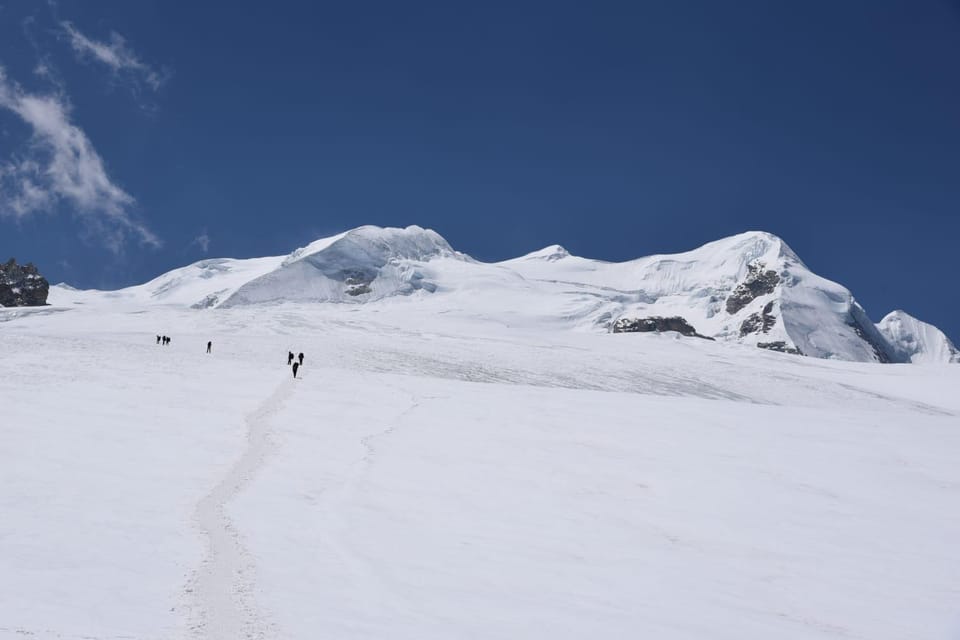
- Mera Peak, at 6,476 meters, is the highest trekking peak in Nepal, offering breathtaking views of the Himalayas.
- The trek typically lasts 18 days, featuring routes like Zatra La Pass and Paiya Hill Pass, ideal for moderate ascents.
- No technical climbing gear is required, making it accessible for trekkers with basic fitness levels and preparation.
- The best climbing months are April to May and late September to November, ensuring stable weather and scenic beauty.
- Cultural immersion with Sherpa hospitality and traditional cuisine enhances the trekking experience, making it both an adventure and a cultural exploration.
Overview of Mera Peak
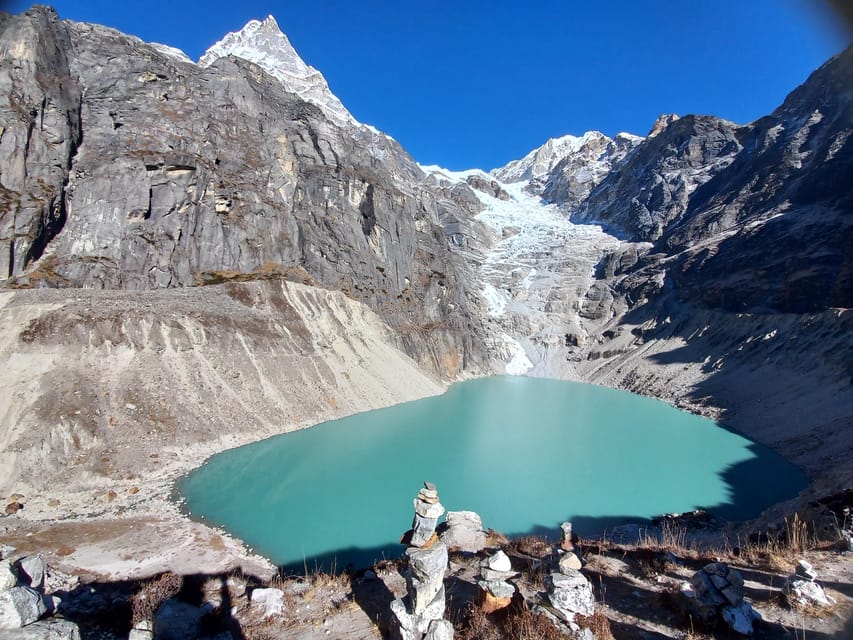
Mera Peak, towering at 6,476 meters, is celebrated as the highest trekking peak in Nepal, drawing adventurers with its stunning vistas of the majestic Himalayas, including the iconic Mount Everest.
Nestled in the Sagarmatha zone of the Koshi province, Mera Peak presents an accessible challenge for trekkers without the need for technical climbing gear. Its allure lies not only in the breathtaking scenery but also in the sense of accomplishment it offers to climbers.
With well-marked trails and a relatively moderate ascent, Mera Peak is ideal for those looking to experience high-altitude trekking. As climbers reach the summit, they’re rewarded with panoramic views that create lasting memories and ignite a passion for the mountains.
Trekking Experience and Routes
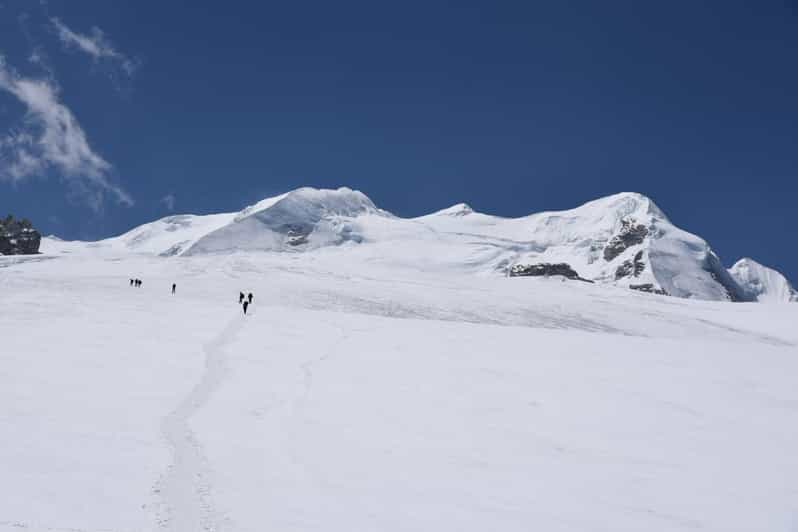
Trekking to Mera Peak offers adventurers an unforgettable journey through the stunning landscapes of the Hinku Valley, where breathtaking views and rich cultural experiences await.
The trek spans approximately 18 days, primarily along two main routes: Zatra La Pass and Paiya Hill Pass. These paths promise a less crowded, intimate experience, showcasing lush green hills, vibrant rhododendron forests, and charming Sherpa villages.
Designed with beginners in mind, the trek combines adventure with opportunities to immerse in the local culture. As trekkers navigate the trails, they encounter the warm hospitality of Sherpa locals, making the journey not just a physical challenge but also a cultural exploration, enhancing their overall experience in this majestic region of Nepal.
Package Inclusions
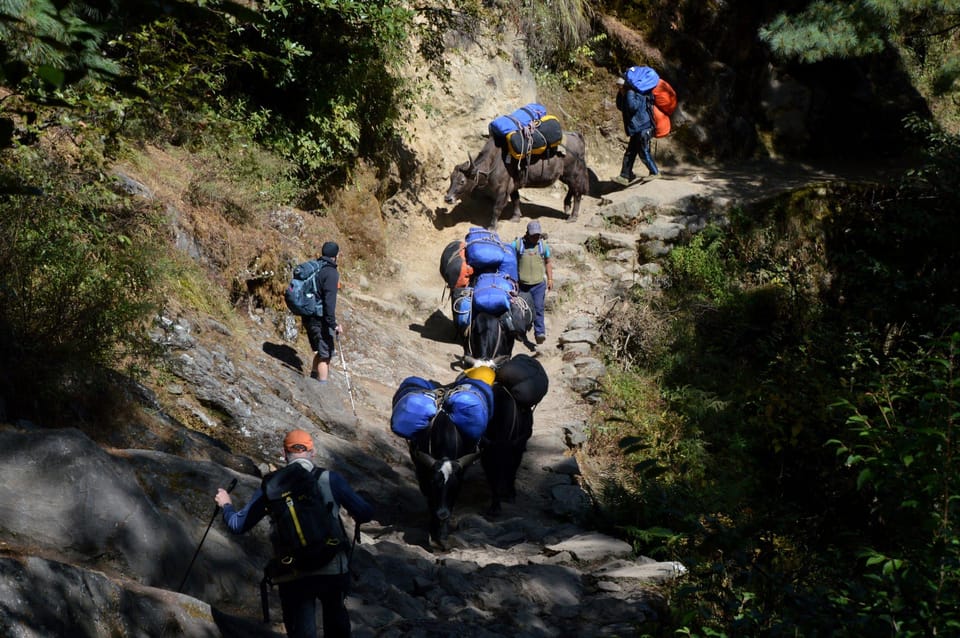
Climbers can expect a comprehensive package that includes essential services and support throughout their Mera Peak adventure. This all-inclusive approach ensures a hassle-free experience, allowing climbers to focus on the breathtaking landscapes and personal achievements.
| Inclusions | Details | Notes |
|---|---|---|
| Airport Pickup/Drop | Convenient transfers to and from the airport | Included in the package |
| Climbing Guide | Experienced support for safe navigation | Guides are trained professionals |
| Meals During Trek | Breakfast, lunch, and dinner provided | Nutritional needs catered for |
With these inclusions, climbers can embark on their journey with confidence, knowing they have the necessary support and resources at their fingertips.
Important Information and Requirements
Before embarking on the Mera Peak adventure, trekkers should be aware of essential requirements and recommendations to ensure a safe and enjoyable experience.
It’s crucial to pack items like a passport, comfortable shoes, warm clothing, sunglasses, and sunscreen. Trekkers should also bring personal climbing gear and secure travel insurance.
This trek isn’t suitable for children under 12 or individuals over 70, so participants must consider their physical condition.
Plus, trekkers should avoid bringing prohibited items such as selfie sticks, bikes, alcohol, and drugs.
Being well-prepared enhances the adventure and allows trekkers to fully appreciate the stunning views and cultural experiences Mera Peak has to offer.
Booking and Cancellation Policy
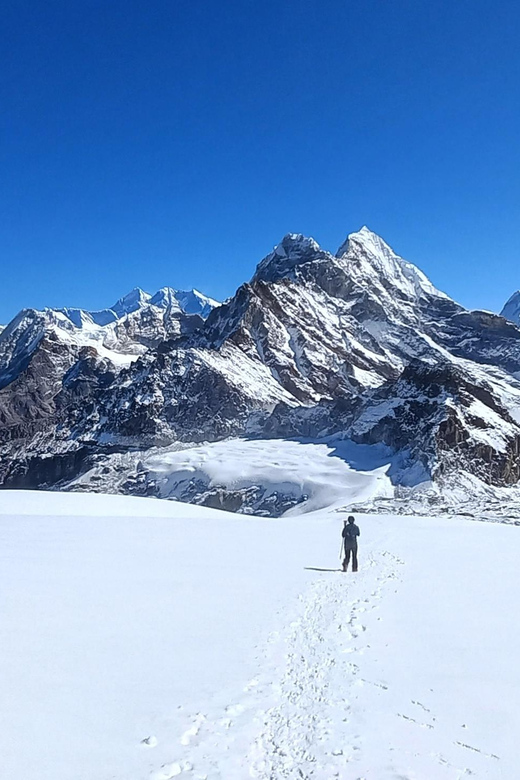
When planning a Mera Peak adventure, understanding the booking and cancellation policy is essential for a smooth experience. The pricing starts at $1,936.47 per person, providing excellent value for the memorable journey ahead. A flexible reservation system allows adventurers to pay nothing upfront and cancel up to 24 hours in advance for a full refund.
Here’s a quick overview of the booking and cancellation policy:
| Policy Aspect | Details |
|---|---|
| Pricing | Starts from $1,936.47 per person |
| Reservation Flexibility | Pay nothing today; cancel up to 24 hours |
| Contact Information | Visit hillsherpatrekking.com or email [email protected] |
This policy helps ensure climbers can plan their trip with confidence and ease.
Best Time to Climb
The best time to climb Mera Peak typically falls between April to May and late September to November, offering stable weather conditions and stunning views. During these months, climbers can expect mild temperatures and clear skies, making the ascent more enjoyable and safe.
Here are three reasons why these periods are ideal for climbing:
-
Weather Stability: Fewer chances of rain or snow, allowing for better visibility.
-
Scenic Beauty: Lush landscapes in spring bloom and breathtaking autumn hues enhance the experience.
-
Fewer Crowds: These months attract fewer trekkers, providing a more peaceful and intimate atmosphere.
Choosing the right time ensures a memorable adventure while tackling the majestic heights of Mera Peak.
Physical Fitness and Preparation
Achieving success on Mera Peak requires proper physical fitness and preparation, as climbers need to build strength and endurance for the demanding trek and ascent.
To get ready, they should engage in cardiovascular exercises like running, cycling, or swimming, aiming for at least 30 minutes a day.
Strength training, focusing on legs and core, is crucial too; exercises like squats and lunges help develop the necessary muscles.
Plus, hikers should gradually increase their trekking distances, ideally practicing on varied terrain.
Hydration and nutrition play vital roles in overall stamina, so maintaining a balanced diet is essential.
Lastly, familiarizing oneself with altitude acclimatization strategies can significantly enhance the climbing experience, ensuring climbers are physically prepared for the challenges ahead.
Local Culture and Community
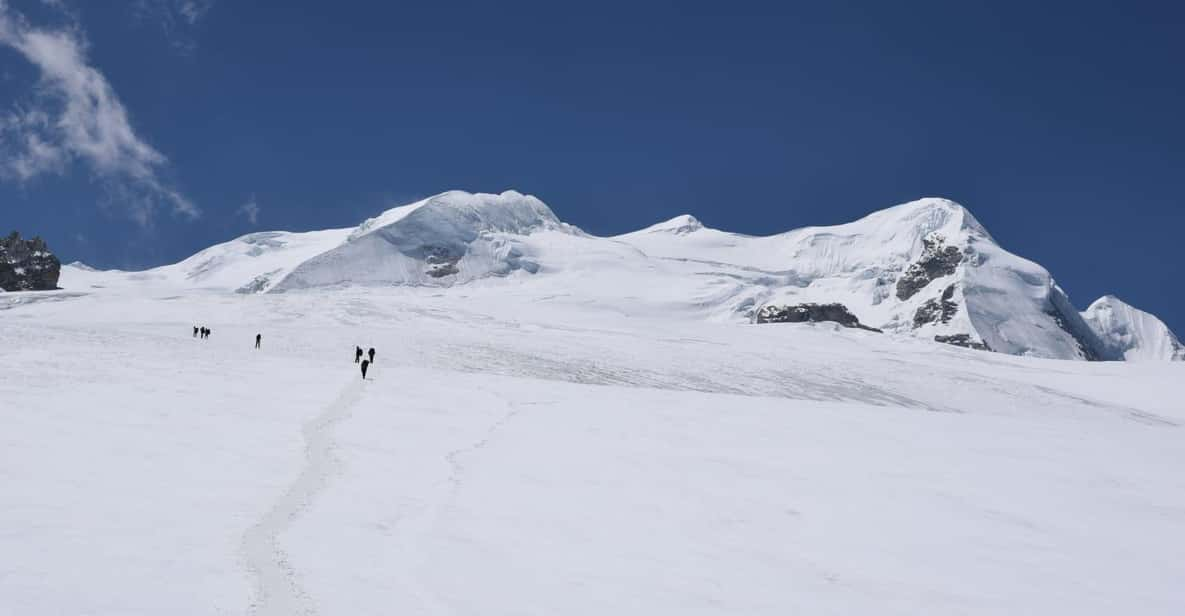
Building physical fitness for Mera Peak not only prepares climbers for the ascent but also opens the door to experiencing the rich local culture and vibrant communities that thrive in the surrounding regions.
As trekkers make their way through the Hinku Valley, they encounter the warm hospitality of Sherpa people, who are eager to share their traditions and stories.
Here are three cultural highlights to explore:
-
Local Cuisine: Enjoy traditional Sherpa dishes like dal bhat, a nourishing meal that fuels climbers for their journey.
-
Festivals: Experience colorful local festivals that celebrate their rich heritage and community spirit.
-
Craftsmanship: Discover handmade crafts and textiles, reflecting the artistic skills passed down through generations.
Engaging with the local culture enriches the climbing experience.
Frequently Asked Questions
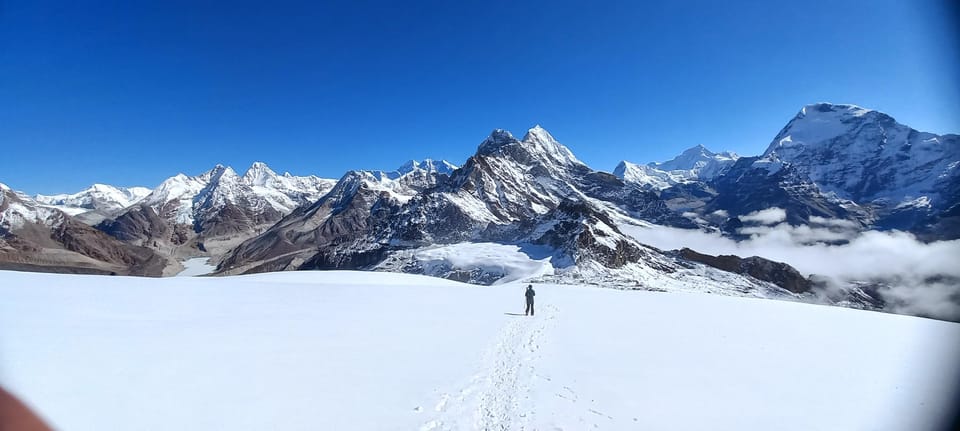
What Is the Altitude Gain During the Mera Peak Trek?
During the trek, climbers experience significant altitude gain, ascending from lower valleys to Mera Peak’s summit at 6,476 meters. This gradual increase helps acclimatization, ensuring trekkers can adapt to the high-altitude environment effectively.
Are There Any Age Restrictions for Participants?
There are age restrictions for participants. Individuals under 12 and over 70 aren’t permitted. This ensures safety and optimal experience for climbers, allowing for a manageable challenge suited to their physical capabilities.
Can I Hire Personal Porters for My Gear?
Yes, travelers can hire personal porters for their gear. This option enhances their trekking experience by easing the physical load, allowing them to focus on enjoying the stunning landscapes and cultural encounters along the journey.
What Are the Emergency Evacuation Procedures?
They’ve established clear emergency evacuation procedures, ensuring safety during treks. Trained guides assess situations, coordinating with local authorities for swift evacuations, using helicopters or ground transport, depending on the severity of the emergency.
Is There Mobile Network Coverage During the Trek?
During the trek, mobile network coverage varies. While some areas offer connectivity, deeper into the mountains, signal strength diminishes. Trekkers should prepare for limited communication options and consider alternative means to stay in touch.
Not for you? Here's more of our most recent tour reviews happening neaby
- Nepal: Kanchenjunga South Base Camp Trek – 16 Days
- MERA PEAK CLIMBING
- Everest Base Camp Trek
- Nepal: Kanchenjunga South Base Camp Trek
- Kanchenjunga Circuit Trek – 21 Days
- 19 Days Lobuche East Peak With Everest Base Camp Trek
- Nepal: Mera Peak Climbing Expedition
- Private Luxury Everest View 5 Days Heli Tour
- Exclusive 3-Hour Everest Helicopter Landing Tour
- Mount Everest Sightseeing Flight
- Mera Peak Climbing
- Island Peak Climbing
Recap
Mera Peak climbing offers an unforgettable adventure, blending stunning natural beauty with rich Sherpa culture.
Trekking enthusiasts can embrace the challenge of reaching Nepal’s highest trekking peak while enjoying breathtaking views and a supportive community.
With careful planning, physical preparation, and the right timing, climbers can ensure a rewarding experience.
As they stand atop Mera Peak, they’ll not only celebrate their achievement but also create lasting memories in the heart of the majestic Himalayas.
